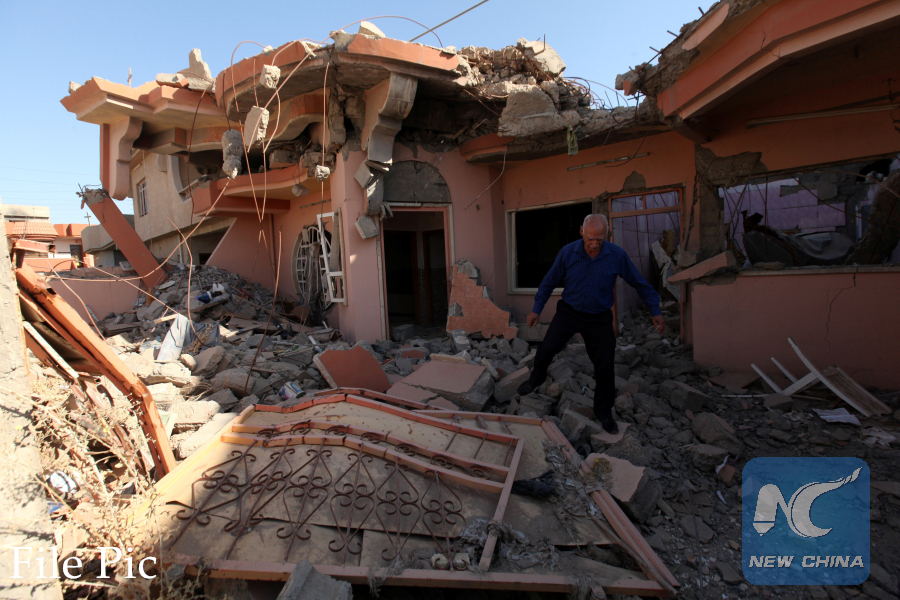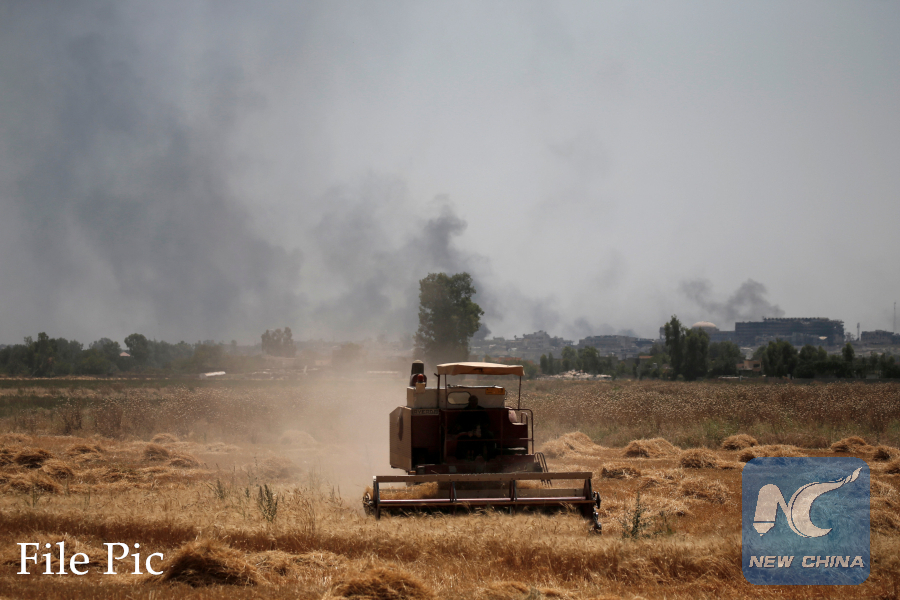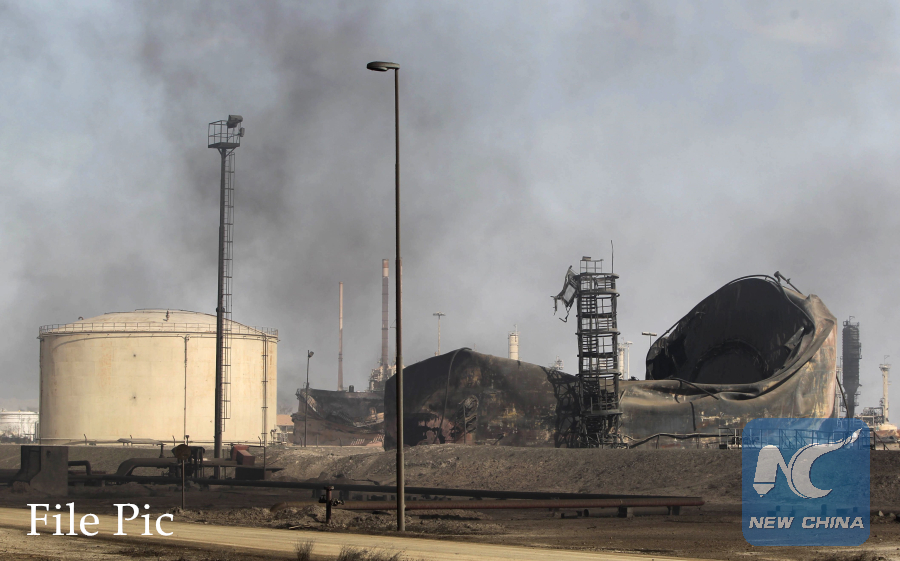
A Christian man inspects his neighbours' home, destroyed by Islamic State militants in the Christian city of Qaraqosh, Iraq, on Sept. 12, 2018. (Reuters file photo)
BAGHDAD, Nov. 1 (Xinhua) -- The Islamic State (IS) militant group is creeping back with new plots into parts of central Iraq, nearly 10 months after the government declared victory against the extremist group.
The IS elements "have re-organized themselves and prepared logistically to carry out a long-term war of attrition against the Iraqi security forces," Mohammed al-Jubouri, from the intelligence service of Iraq's northern-central province of Salahudin, told Xinhua.
IS militants are launching attacks from their redoubts located in the rugged areas between the provinces of Salahudin and Nineveh in the north, including the areas of Hatra and Shirqat, and the mountain ranges of Himreen and Makhoul, Jubouri said.
Their hideouts also extend westward to the desert of Anbar Province as well as in the northeastern and eastern parts of Salahudin Province, including Hawijah area near Kirkuk Province and Mteibijah near the provincial border with Diyala, he added.
"IS militants built their headquarters in these areas and dug dozens of tunnels and hideouts, where they brought foodstuff and medical supplies and set up solar cells to generate electricity," the Iraqi source explained.

Smoke billows from the positions of the Islamic State militants as a harvester gathers the wheat crop from a field in western Mosul, Iraq, on June 19, 2017. (Reuters file photo)
According to Jubouri, the IS militants are communicating by their cell phones and the U.S.-made Hytera two-way radios, which could be used within a radius of 60 km.
Drones for reconnaissance are also regularly used to spot the positions of the security forces and track their movement, he noted.
"One of major IS tactics is ambushing the security forces after tipping them off with false information, in order to bring them to a specific area well-prepared by the militants, and surprise them with attacks to cause heavier casualties," Jubouri said.
"The terrorists also frequently disguised in uniforms of the army, police and paramilitary Hashd Shaabi, in addition to using the same military American made weapons, including M16 rifles, which they got from the security forces who abandoned their posts during the IS blitzkrieg in June 2014," he added.
Meanwhile, the security forces are monitoring the extremist militants by means of reconnaissance and intelligence reports, which enabled them to carry out offensives and painful strikes on their hideouts.

Smoke billows from a refinery complex near the northern Iraqi town of Baiji on Oct. 17, 2015, after Iraqi security and allied paramilitary forces recaptured the area from the Islamic State group. (AFP file photo)
The re-emergence of IS militants in the vast sparsely populated territory in northern-central Iraq has raised questions about the victory declared by former Prime Minister Haider al-Abadi.
Earlier this year, many people were abducted and killed by militants claiming to be affiliated with the IS group.
Ibrahim al-Ameri, an Iraqi political analyst, said the IS comeback attempts in Iraq are "inevitable," as "they are facing tough situations by losing many of their strongholds in neighboring Syria."
Ameri believes the extremist group is trying to tighten its grip in central Iraq and reunite its areas with their surrounded strongholds in neighboring Syria.
In fact, IS militants also made a surprise advance in eastern Syria, when they seized positions of Syrian Democratic Forces (SDF) near its border with Iraq.
Their advance in Syria raised concerns in Iraq that IS militants could infiltrate into Iraq to make use of IS hideouts in the desert and rugged areas in the center of the country, pushing the Iraqi army, border guards and Hashd Shaabi brigades to dispatch reinforcements to block the borderline, Ameri warned.
In a statement on Oct. 28, Iraqi new Prime Minister Adel Abdul Mahdi, also commander-in-chief of the Iraqi forces, emphasized "the importance of continuing precautionary efforts and keeping track of the terrorist groups to secure the border with Syria."

